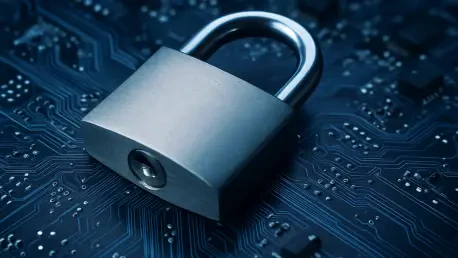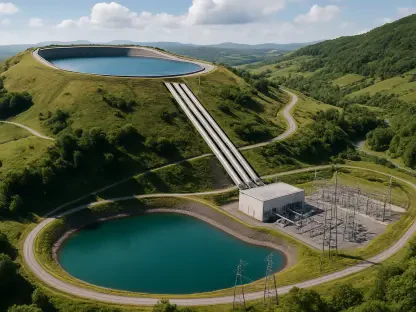As the energy landscape continuously evolves, utility companies face ever-increasing challenges driven by surging energy demands, accelerated adoption of renewable energy sources, and recurrent extreme weather phenomena. Amidst this backdrop, there is growing urgency for utilities to overhaul and modernize grid infrastructures to ensure not only uninterrupted power supply but also public safety and economic stability. This technological overhaul, however, comes with its own set of challenges, as it renders energy assets more interconnected, leading to heightened cyber threats that are increasingly sophisticated. Hence, advancing a cyber-resilient outlook toward grid infrastructure has become paramount to maintaining the reliability and security of utility systems.
1. Integrating Cybersecurity into Networking Equipment
To effectively balance the expanding grid systems and burgeoning security threats, embarking on strategies that seamlessly integrate cybersecurity into networking equipment is essential. Security cannot be an afterthought and must be intrinsic to networking constructs to avoid unnecessary costs and complex security operations. This involves creating WAN infrastructures that are inherently secure and capable of evolving with technological advancements. One key aspect is to deploy networking solutions capable of scaling across various environments, connecting dispersed smart grid devices, and adapting to available backhaul technologies, from urban settings to remote rural areas.
Moreover, fusing security into networking solutions involves advanced and ruggedized industrial routers with modular interfaces, designed for smooth transitions between different technologies such as 4G/LTE, 5G, and their private and public variations. Industry-standard certifications like IEC 62443-4-1 and IEC 61850-3 ensure that these solutions meet the unique demands of utility environments. Embedding cybersecurity capabilities into routers connected to crucial grid assets is vital in eliminating the necessity of deploying additional appliances in challenging locales. These security features, including application layer firewalls and advanced threat protection, are robust solutions for safeguarding against cyber intrusions.
2. Physical Connectivity and Zero Trust Principles
Physical connectivity remains a pivotal security aspect, especially given the dispersed and at times uncontrollable nature of grid assets. Implementing robust security measures ensures that only verified devices connect to the field network, forestalling threats originating from unauthorized access. The deployment of zero-trust security principles is crucial, denying access to potential bad actors, even if they manage to breach the physical security perimeter where networking hardware is installed.
Utilizing technology like Cisco Industrial Routers empowers network administrators to regulate endpoint access based on MAC addresses, ensuring only authenticated devices reach networking ports. Furthermore, comprehensive management of asset identities and overarching security policies is achievable by incorporating platforms like Cisco Identity Services Engine (ISE). The ability to manage these assets and implement security directives, especially on a large scale, ensures network integrity at every connection point. As these connectivity points grow more complex, maintaining oversight and control with zero-trust models fortifies the entire grid system’s defenses against cyber intrusions.
3. Strategic Network Segmentation for Risk Management
In the pursuit of cyber resilience, network segmentation emerges as a critical strategy, allowing utility companies to minimize and manage cyber risks effectively. Once a device accesses the network, it should only interact with necessary resources, restraining unwarranted communications. This practice not only curtails potential breaches but also controls any resultant damage by limiting interaction within the grid’s digital ecosystem. Strategic segmentation safeguards critical systems, such as power distribution controls, by isolating them from less-sensitive operations like surveillance systems.
This network partitioning not only deters malicious traffic dissemination but also guarantees resilience by containing security breaches and preventing them from cascading across the network. Establishing a robust defense-in-depth approach ensures that even if one segment succumbs to cyber threats, the broader infrastructure remains protected. Technologies like Cisco Industrial Routers facilitate these defensive strategies by separating traffic flows within distinct virtual networks. Leveraging Cisco Identity Services Engine (ISE) helps define and enforce segmentation policies at scale, fortifying critical infrastructure components against broader cyber threats.
4. Centralized Management and Automation of Network Operations
Given the inherent complexity of grid infrastructures that span vast geographical territories, centralized orchestration and automation become pivotal in streamlining network operations. Utilizing platforms like the Cisco Catalyst SD-WAN Manager combined with Cisco Industrial Routers delivers high performance, security, and reliability, tailored explicitly for the arduous demands of utility networks. Centralized management of routers and security configurations assists in unifying security policies, eradicating defense gaps, and simplifying the deployment and management of network infrastructures at scale.
By automating network operations, utilities can reduce manual device configurations, enhancing deployment speed and policy consistency. Additionally, centralized orchestration supports automated processes like VPN provisioning, security key handling, and large-scale tunnel provisioning, which are indispensable for utility networks with extensive reach. Such automation not only optimizes operational efficiency but also ensures robust policy enforcement, contributing to a secure and resilient energy grid capable of adapting to future technological shifts and operational demands.
Conclusion: Embracing Cybersecurity as a Core Component
As the energy landscape continues to transform, utility companies face a slew of growing challenges. These are driven by increasing energy demands, the rapid adoption of renewable energy sources, and recurring extreme weather events. In this environment, there’s an urgent need for utilities to modernize their grid infrastructures not only to guarantee an uninterrupted power supply but also to ensure public safety and economic stability. However, this technological renewal isn’t without its own difficulties. The increased interconnection of energy assets significantly heightens the risk of cyber threats. These threats are becoming more sophisticated in nature, posing real risks to grid security. Therefore, it is crucial for utility companies to adopt a cyber-resilient approach to their grid infrastructure. This approach is essential to maintain both the reliability and security of utility systems. The delicate balance between technological advancement and security forms the cornerstone of a stable and secure energy future.









